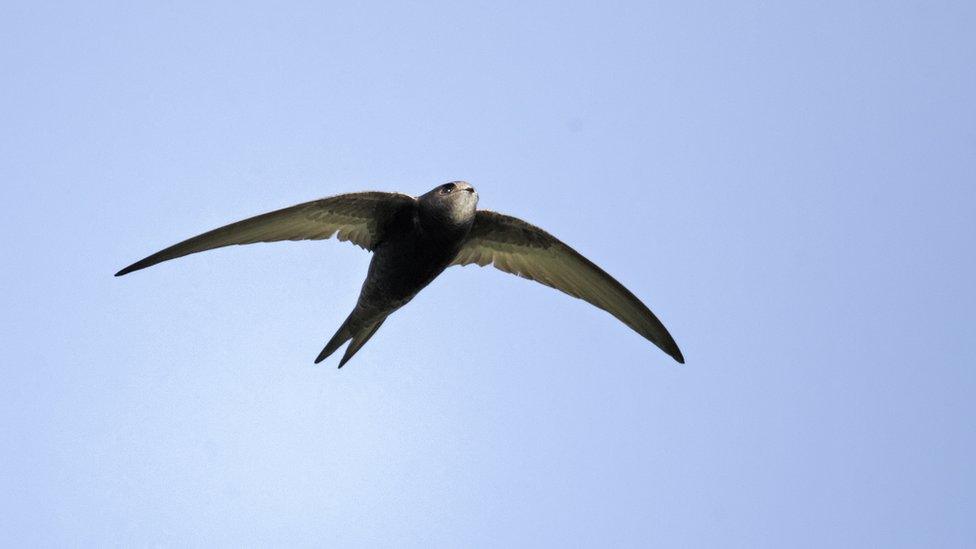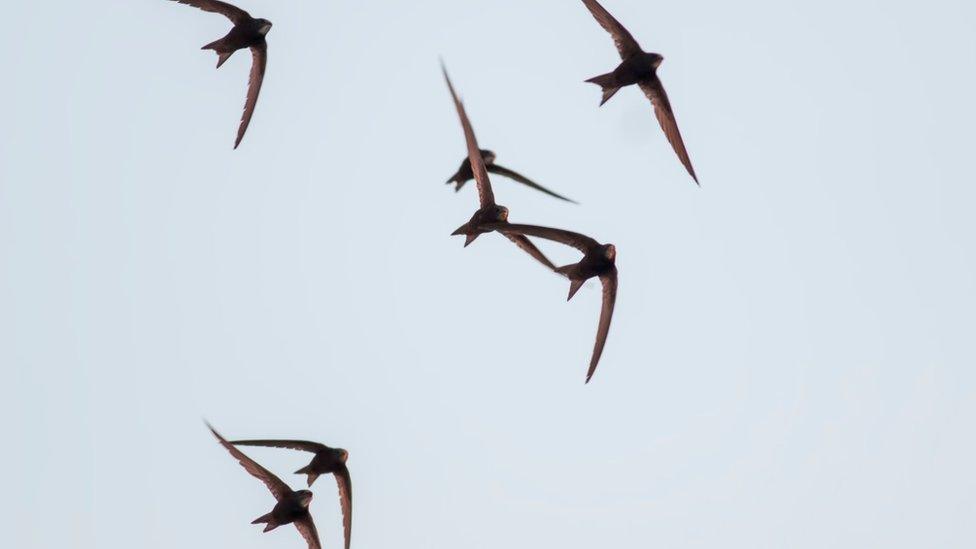Swifts' wings 'help them fly through storms'
- Published

Swifts continue flying through the stormiest weather
Researchers at Edinburgh University have discovered how swifts are able to continue flying even in stormy weather.
A new study suggests the aerodynamics of the birds' wings enable them to adapt effortlessly to sudden changes in wind speed and direction.
Using digital imaging, researchers observed vortices at the leading edges of the wings that appear to dampen the effects of blustery weather.
They think it could one day mean better designs for drones.

Swifts fly to and from Africa, spending most of the time in the air
Swifts are one of nature's best fliers - consistently recording speeds of about 25mph when flying horizontally.
They arrive in Scotland for the cooler summers and then migrate back to Africa.
Apart from nesting, they spend their lives on the wing and even keep flying when asleep.
The Edinburgh researchers found the wings' crescent shape lessens the effects of blustery conditions, helping to stabilise them as they glide during turbulent weather.
This means swifts are not forced to use up vital energy to stay on course.
Scientists constructed a triangular model wing with the characteristic trailing edge shape of swifts' wings.

Swifts are one of nature's best fliers
They studied its aerodynamic properties by fitting it into a water flume that simulated airflow during flight.
Results showed that as air passes over the wing, it can form into two or three circulating regions of airflow - known as leading-edge vortices, or LEVs.
In aircraft with triangle-shaped wings - including Concorde - LEVs can generate extra lift, researchers say.
In swifts, however, the formation of LEVs may act as a dampening mechanism that helps stabilise the birds' wings as they glide in blustery weather.
Dr Ignazio Maria Viola, who led the study, said: "One of the most fascinating secrets in nature is how birds and insects can fly so effortlessly in turbulence.
"These results provide a small breakthrough towards unravelling this precious secret."